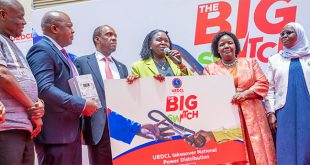
How anti-trafficking tactics netted suspected killers
Kampala, Uganda | RONALD MUSOKE | When news emerged on March 20 that six lions had been killed in Queen Elizabeth National Park, in southwestern Uganda, Uganda’s conservation community and the security forces acted swiftly.
The carcasses of the lions were found in the Ishasha area which is in the southern sector of the park which is popular for its rare tree climbing lions.
After confirming the killing of the lions on March 20, the Uganda Wildlife Authority (UWA), the country’s top conservation agency, immediately dispatched a team of investigators to the crime scene in Rusoroza Parish, Kihihi sub-county in Kanungu District.
Then on March 22 it announced a cash bounty of Shs10 million for anyone who would provide information that would lead to the arrest of the killers. It was a signal of how much UWA was also keen to catch the killers and UWA said a call from a “volunteer” came in immediately.
Four days after the killing, on March 23, UWA, the Uganda army and police mounted a joint operation and arrested three men as suspects. They included; Vincent Tumuhirwe, a 48-year old and Robert Ariho, a 40-year old peasant and David Miryango, a 68-year old male traditional healer. They were all locals from Tukundane village on the edge of the park in Kanungu District and Kazinga lower village.
“The case in point clearly demonstrates our resolve in holding accountable all persons who endanger wildlife,” said Police Spokesperson Fred Enanga on March 24.
“Our priority as the joint security agencies still remains enforcement of wildlife protection laws in the country,” Enanga added.
Police said the trio have since been transferred to Kampala and will be arraigned before the Utilities, Standards and Wildlife Court on various charges of unlawfully killing wildlife species, unlawful entry into wildlife protected areas and being in unlawful possession of wildlife pieces of three lion heads, 15 legs, a jerry can containing suspected animal fats, which were all exhibited. Other exhibits which were recovered include a tin of suspected poison, and spears.
Enanga said in a statement that forensic examination by UWA veterinarians revealed that the dead lions and nine vultures died after eating the poisonous carcasses and that the three suspects admitted to killing the lions for body parts and fats, which are used for ritualistic cleansing.
The latest killing of lions has left Uganda’s wildlife conservationists reeling from yet another massacre of lions in Queen Elizabeth National Park, one of the country’s most popular wildlife parks in Uganda.
The killing of Africa’s largest “big cats” brought the number of known lion killings to 17 in the last three years and close to 25 since 2008 in this conservancy. For a species whose population is fast declining, the March 20 incident left Uganda’s conservationists scratching their heads for answers.
“What just happened in Queen Elizabeth Park is saddening for Uganda,” said David Duli, the Country Director of the World Wildlife Fund (WWF).
“As WWF, we are getting a little more concerned because we do a lot of investment in harmonizing the relationship between parks and the frontline communities,” Duli told The Independent on March 25.
For Dr. William Olupot, the director of Nature and Livelihoods, a Kampala-based non-profit, the killing of the lions requires long lasting solutions.
“Human-wildlife conflicts are bound to occur but it is important to investigate these incidents, get to the root of the cases and then try to find long lasting solutions,” he said.
The initial anxiety was heightened because most of the lions’ body parts were missing. That triggered fear of involvement of international poaching rackets searching for lion body parts. And even as police investigations point to ritualistic practices in the community, the UWA are also not ruling out illegal trade in wildlife parts according to Bashir Hangi, the UWA communications officer.
“Given that some of the body parts of the lions are missing we cannot rule out illegal wildlife trafficking,” he told The Independent.
“It is a big set-back for conservation and tourism in the sense that anything that affects our animals affects tourism; it makes sighting lions a little harder. It also means that resources which have been invested into conservation for years suddenly go to waste,” he said.
“When tourists don’t come to visit, we lose out as a country but also the communities themselves lose out on the money they receive from the national park gate fees. The communities lose, the country loses and the impact is direct.”
Hangi said UWA is rising to the challenge of wildlife trafficking in the country. He said they are more vigilant in the conservancies through setting up a robust canine unit and investigations and prosecution units.
“The reason why the situation seems more pronounced is because we are communicating better,” he said.
 The Independent Uganda: You get the Truth we Pay the Price
The Independent Uganda: You get the Truth we Pay the Price




Thanks for this post. I have been following
this site for a couple of weeks now, and I very rarely
comment on anything. Having said that, credit where it is due, I
love this article. Please keep up the great work.I am soaking up as much advice as possible in order
to have a awesome wedding ceremony next
year.